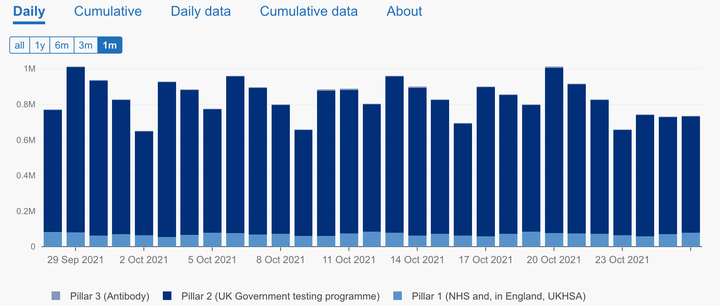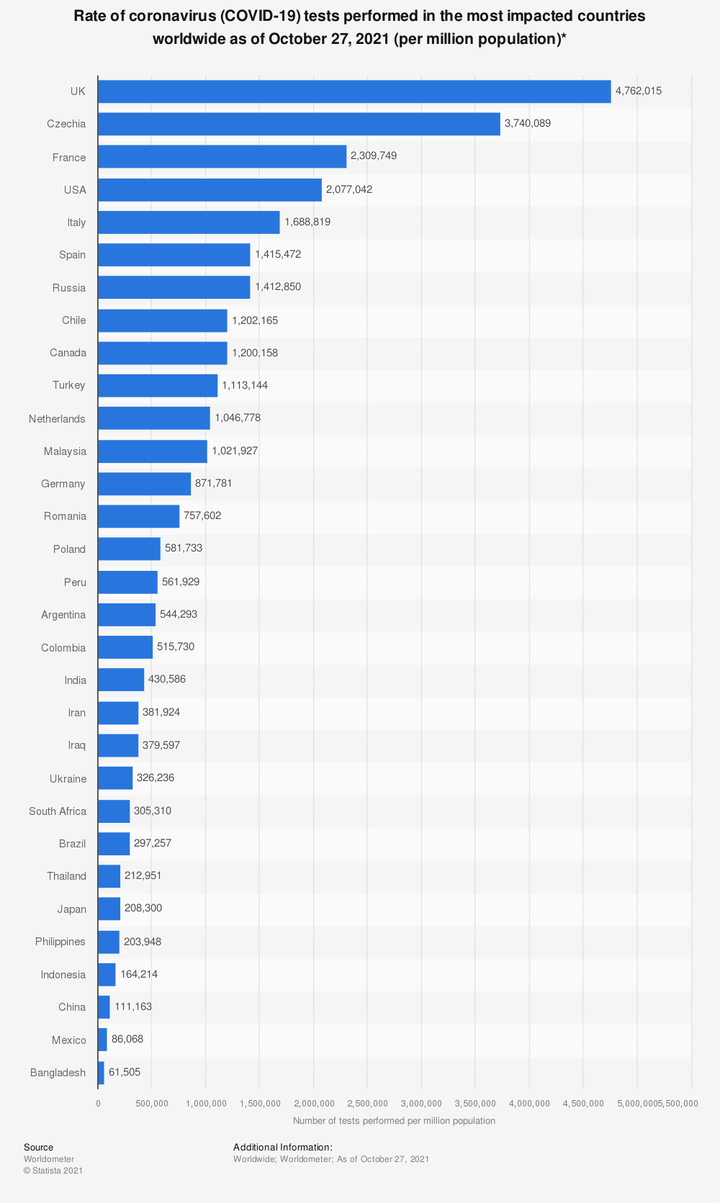Rising Covid infection rates have prompted calls for tighter social distancing measures to be brought back across the country – but, curiously, the number of positive cases seems to have dropped in recent days.

This downturn seems to go against the predictions from Covid specialists and representatives from the NHS who have pushed for the government to implement plan B as soon as possible over fears that infections are only going to climb even higher.
Downing Street has maintained that the current data does not suggest plan B should be enacted.
The government’s chief scientific adviser Sir Patrick Vallance also claimed on Thursday that all of the modelling around Covid is “quite uncertain at the moment”.
Speaking to BBC Breakfast, he said: “Nobody is really clear about which direction this is going in.”
Here are four possible theories as to why the Covid rate seems to be fluctuating so much at the moment.
1. Is the government tracking data properly?
The ZOE Covid Study, which tracks data around the pandemic primarily through its app, has claimed that the government is not releasing accurate figures around current infection rates.
ZOE’s co-founder and lead scientist Professor Tim Spector claimed: “The government raw figures report on PCR testing of the classical symptoms only, which miss around 40% of cases.”
As ZOE has previously pointed out, the official Covid symptoms listed on the gov.uk website do not seem to have been updated since the Delta variant emerged.
It still lists the original symptoms of a “new, continuous cough”, a high temperature or a loss or change to your sense of smell or taste as the three primary indicators of the virus.
Since the Delta variant has become the most dominant form of the virus in circulation, those infected usually have a runny nose, sneezing, sore throat or a headache instead.
According to ZOE, infection rates are therefore going to be much higher than the government claims.
“ZOE extrapolates the data from our sample to predict daily infections in the wider population,” Spector said.
“With the confirmation of our estimates from the ONS’s fortnightly survey, it’s clear the government figures are a big under-estimate, and with the highest rates in Western Europe, there’s no room for complacency.”
The ONS survey estimated for the week ending October 16, 977,900 people had Covid which equates to 1 in 55 people in England, while the ZOE app estimates 1 in 56 people in the UK at the moment have Covid.
2. Are people taking fewer tests?

The official government data seems to suggest a slight downturn in the number of Covid tests being taken each day.
Some have pointed to the UK’s testing capacity when looking into why Britain’s infection rate has been so much higher that other countries.
Data from Statista proves that the UK has at least one million more tests performed per million of population compared to the other most impacted countries in the world.

3. Is it because more children have been vaccinated?
While the vaccine rollout has been extended to younger children, Covid rates among those aged between 10 to 19 are still soaring.
According to new information from the UK Health Security Agency, case rates are now highest between this age bracket – and lowest in the over 80s.
4. Are we about to reach ‘endemic equilibrium’?
Specialists at the London School of Hygiene and Tropical Medicine predicted that cases would go down this winter even without implementing plan B.
Epidemiologist at the University of East Anglia, Professor Paul Hunter, told Sky News: “Once you reach endemic equilibrium, non-pharmaceutical interventions (social distancing and mask wearing) stop having much of an effect.”
He claimed this is due to increased immunity.
“The modellers are predicting incredibly low numbers by mid-December in pretty much all of their scenarios.
“So if they’re suggesting that even if we do nothing cases are going to decline substantially, more restrictions don’t seem to be the appropriate response.”
However, the government’s Scientific Pandemic Influenza Group on Modelling warned that this data may be “too optimistic”. It said the suggestion does not take into account switches in behaviour which could see dramatic increases in infection, such as the excitement around the Euro 2020 final, or mutations of the virus.
Virus immunity is expected to wane in coming months too, which could skew the “endemic equilibrium”.